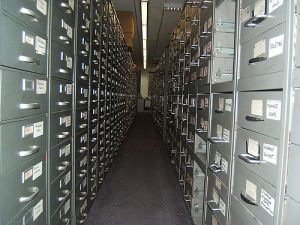
4 Writing File Organization Tips to Help You Remember Where Everything Is
-
Do you have trouble finding files on your computer?
-
Is it one you haven't used in the last year and you're having trouble remembering where you put it?
-
Have you ever created a new file because you couldn't find the one you were looking for and you couldn't remember the name of it?
It's time for some writing file organization tips to help you get your writing files in order. Spending extra time trying to find the right file slows us down and creates a distraction that keeps us from our writing work. It also fuels our procrastination habits.
When you are looking for a particular file and you can't remember where it is, you open yourself up to finding other files that grab your attention, taking you away from the task at hand. When you find a file that is named "dead body" or "brainwashing techniques", it's easy to get distracted. You're thinking, "Gee, I don't remember writing this. I wonder who had access to my computer!" And then you can't help but open it. Am I right?
Get your writing files in order so you can find files quickly and without roadblocks by following these file organization tips:
Tip 1 – Create a File Structure
Creating a file structure for your writing files can help you locate files faster and easier. It can also help keep your computer cleaned up. It takes a little extra time at the front end to set this up, but what new process doesn't take a little start-up time?
Make your file structure logical. For example, you might create a file structure that looks like this:
-
Writing Files
-
Novels
-
[Novel 1 Title]
-
[Novel 2 Title]
-
-
Ideas
-
Stories
-
Articles
-
Templates
-
-
Business Files
-
Companies
-
[Company Name1]
-
[Company Name2]
-
[Project Type or Name – e.g., "Case Study – Residential Water Filters"]
-
-
-
Publications
-
You get the idea. Make it flow as much as you can. That way, when you go back to it a year from now, you're more likely to remember where certain things are.
Also, keep your file structure shallow. Back when I first started my business, I created a pretty deep file structure and I had two sets of client files: one for projects and one for business-related files such as invoices and agreements.
Had I known then what I know now, I would have lumped project files and business files together into one set of client files. At the time, I wanted to keep all of the business files together so I could keep better track of invoices. But it's just as easy to do that using an Excel spreadsheet.
Lastly, for file structures, give each folder a simple and logical name.
Tip 2 – Organize Files Regularly
One of the tricks to staying organized is keeping files organized regularly. The ease and speed of creating new computer files is dangerous without the discipline to make sure they get filed properly. Within a matter of a couple weeks, one could find oneself inundated with files scattered everywhere, on the desktop or in the Documents folder.
When you create a new file, take the extra two minutes to decide where to save it and then save it wherever you decide. This will save you time and headache later on when you go looking for it.
Tip 3 – Keep Files In One Place
It's hard to keep files organized when you use multiple computers. One great way to keep writing files in order is to use a software tool such as Microsoft OneNote or Evernote. I have used both. Instead of creating a file on your secondary computer, copy and paste the text from your primary computer into OneNote or Evernote. You can then access the text through your computer or via a web browser.
One downside to using these tools, if you have a slow computer, is that they tend to require a lot of computer memory. But the major benefit is being able to have your written documents together within one platform that is accessible through different channels. Without them, you could have multiple versions of a particular file.
Tip 4 – Create a File Structure Map
Once you have developed your file structure, create a map and detail what is in each folder. That way, if you ever forget where you put something, you can check your map and see where the most likely home is for that particular file.
I hope you have found these file organization tips to be helpful. Hop on over to my Facebook page and let me know how you have organized your file structure. I'd love to hear your thoughts so we can all learn from each other! – https://facebook.com/jodycalkinsbiz
- It’s been a long time… - February 10, 2024
- Realizations About Tracking Progress - May 28, 2020
- Goal Setting & Productivity 101 - May 25, 2020
